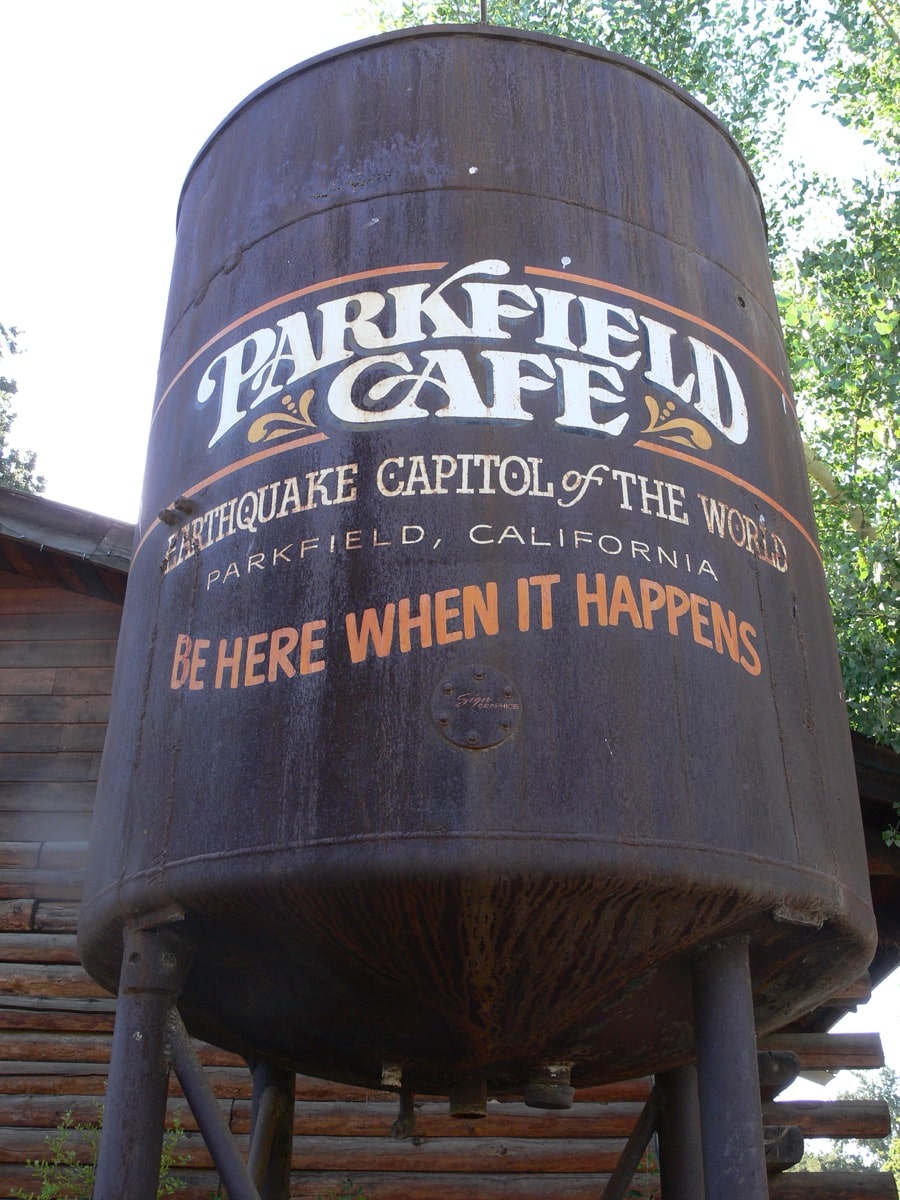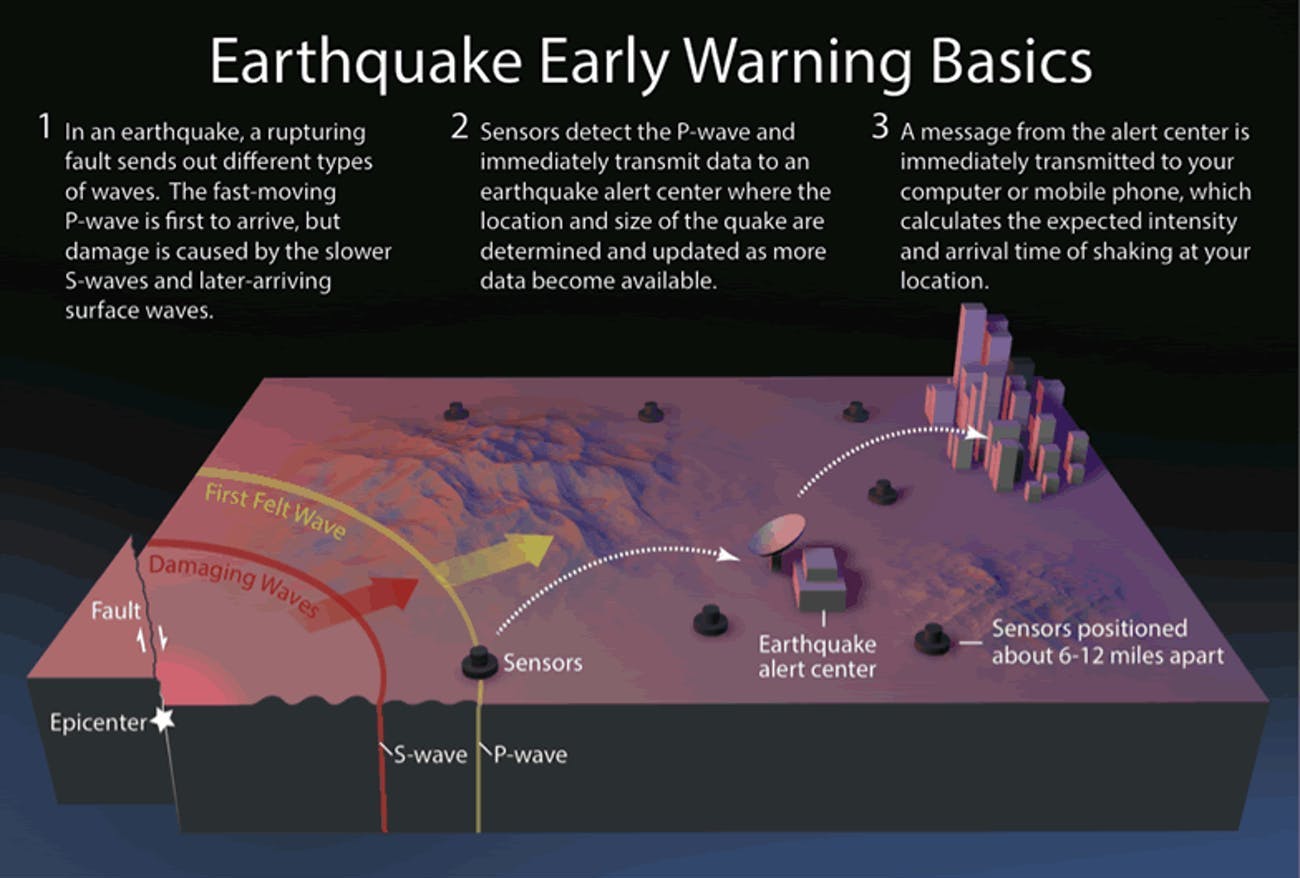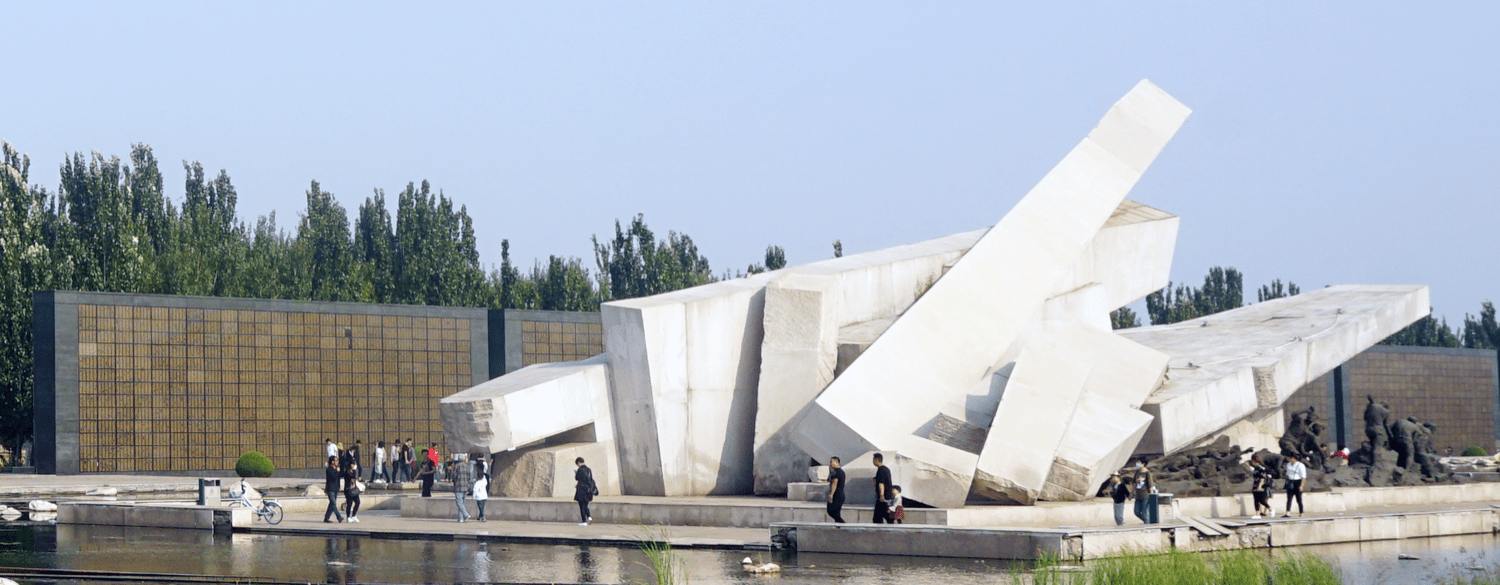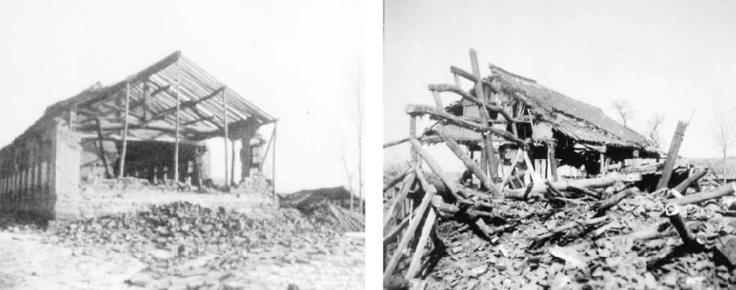The Rise And Fall Of Earthquake Prediction
How a ‘successfully predicted’ earthquake in China was not so successfully predicted after all.

Although the news coming out of the People’s Republic of China in 1975 was scarce, seismologists across the world could be sure of a few things: First, they knew there had been an earthquake in Haicheng, in northeast China. It was a strong one, rolling in at magnitude 7.3. The quake occurred on February 4th, 1975, and—as was the custom for the Chinese government at the time—officials did not include casualty reports or damage estimates. There was a major relief effort underway.
But, months later, the party issued a statement that threw seismologists into disarray: “The Haicheng earthquake was successfully predicted, saving untold thousands of lives.”
Reliable earthquake prediction has been sought after by many, but never achieved. It’s only existed in the realm of science fiction for seismologists. But researchers began to wonder if China finally brought prediction into the real world.
“There really was a measure of genuine excitement on the part of a lot of scientists,” says Susan Hough, a seismologist at the United States Geological Survey. In the decade leading up to the event, the field of earth sciences had been experiencing a shake up of its own. A new generation of younger scientists emerged to push forward theories that had been met with resistance, and plate tectonics became widely accepted by the community in the 1960s.
“It was kind of an atmosphere where paradigms were falling by the wayside,” Hough says. “Then this word came out from China. Some people saw that as confirmation of what the science seemed to be saying.”
But the announcement, though promising, was lacking. “The political situation in China was such that they weren’t going to get detailed data to evaluate,” Hough says. “Scientists at the time really wanted to know more details about what had happened.”
Chinese Earthquake Administration: The state-wide government office that monitored, researched, educated, and provided emergency response for earthquakes. Similar to the United States Geological Survey.
Earthquake Office or Seismology Bureau: A government office, similar in function to the Chinese Earthquake Administration, but operated on a provincial or county level. Each one oversaw a number of local earthquake observatories.
Earthquake Observatory: A center run by local workers who observed geophysical and chemical signs related to earthquakes.
Back in 1974, officials and seismologists in the Liaoning Seismology Bureau were also in need of details. Haicheng’s province, Liaoning, is no stranger to earthquakes, but during the winter of 1974-75, it was more seismically active than usual. Swarms of small quakes had been rattling Haicheng county for months. There were reports of strange animal behavior; the ground was tilting in the same direction at a few sites; the electric current in the earth was exhibiting odd measurements; groundwater color and levels were changing. It was later found that some of these anomalies were the result of nearby irrigation efforts. But at the time, officials didn’t know that, and began to suspect a large earthquake was imminent.
Chinese seismologists found themselves in a tenuous and strange position in their country. The People’s Republic of China during Chairman Mao’s Cultural Revolution targeted scientists, researchers, teachers, and anyone perceived as an intellectual. They were declared “enemies of the people” and were subjected to public humiliation, beatings, or sent to reeducation camps (or all three).
But the government did make an exception for seismologists. The Chinese Earthquake Administration was one of the few government agencies dedicated to science in the earthquake-prone country at the time, and the Party sought to limit damage to its large and mostly rural population.
The officials decided that one of the best ways to limit damage from an earthquake was to predict them. Robin Adams, a seismologist from New Zealand who visited China during this period, spoke with Chinese seismologists who explained to him, “Chairman Mao told us to predict earthquakes, so we had to.”
There’s only one problem. “We can’t predict quakes,” says Lucy Jones, a seismologist and author of The Big Ones: How Natural Disasters Have Shaped Us (and What We Can Do About Them)—a deadly lesson the Chinese would soon learn.
In the 1970s, seismologists were optimistic about achieving routine prediction within a decade—they just needed to gather more data, study the effect precursors had on quakes, and develop better infrastructure. Today, the United States Geological Survey (USGS) says you need three pieces of information in order to successfully predict an earthquake: the date and time, the location, and the magnitude. But earthquake scientists know that the actual work of predicting an earthquake is complicated by many, many unanswered questions.
“The general consensus is that prediction is not really feasible,” says Ryan Turner, a field engineer at the UNAVCO, an organization that facilitates geoscience research and education. “It’s pretty clear that some earthquakes have precursors. Some earthquakes have foreshocks. Some earthquakes maybe release gases. Some earthquakes cause water tables to change because of poor pressure changes in the subsurface. But not all of them and not any of them seem to do the same thing.”
Take, for example, the mystery of rupture fronts. An earthquake begins when two tectonic plates slip next to each other along an area known as a fault. When the plates slip, it creates a boundary between the moving and locked parts of a fault called a rupture front, which moves down the fault before eventually stopping. How far the rupture front travels before stopping determines the magnitude of the earthquake, a factor that is necessary for prediction—but the process of how and why it stops is unknown to seismologists.
“What makes that rupture front stop after only traveling 10 centimeters versus traveling 10 kilometers? Theoretically, we don’t know what makes it stop,” says Lucy Jones. “Is it determined by something in how it starts, or is it just what it runs into? If it’s the latter, if the magnitude of the earthquake is determined dynamically during the rupture, then it’s not just that [prediction] is a difficult problem, it’s an impossible problem. The information isn’t there before the beginning of the earthquake.”
Putting aside rupture fronts, not all faults are alike. Not even the same fault, like the San Andreas in California, behaves the same at different parts. As Turner says, “It’s not easy to make blanket statements about how earthquakes start in different areas…. We have basic models, but all those basic models fall apart when you start looking at specific cases.”

In 1985, for example, the USGS started observing the town of Parkfield, California, which lies on the San Andreas fault. Parkfield, affectionately nicknamed the “earthquake capital of the world,” was known for its regularly-occurring earthquakes. Since records began in 1857, a magnitude 6.0 earthquake, on average, happened every 22 years, a remarkably regular interval for seismic activity.
“Seismologists said okay, it happens [about] every 22 years, let’s instrument the heck out of this area and look for any conceivable precursors that we can find,” explained Turner. In other words, if predicting earthquakes was possible, Parkfield would be a key testing ground. Parkfield’s last 6.0-magnitude earthquake hit in 1966; the scientists anticipated the next one to hit between 1983 and 1993. The team installed all manner of instruments in the area, including seismometers, strainmeters, creepmeters, and GPS receivers. Then, they waited.
The year 1993 came and went without the expected 6.0 earthquake. Same for the next year, and the next year, and the next year. It wasn’t until 2004, over a decade later than expected, that a magnitude 6.0 earthquake finally arrived. The conclusion from the resulting study was soberingly clear: “Reliable short-term earthquake prediction still is not achievable.”
“There were absolutely no precursors. Some of the assumptions about what the earthquake would be like turned out to be completely wrong,” said Jones. “So, in America, the failure of the 2004 Parkfield Experiment was sort of a final end by which time people are really walking away from [prediction]. There are still some groups, but they are very much seen as fringe.”
For the Chinese government in the 1970s, earthquakes were a battle to be won. “This time, we will demonstrate ‘preparedness averts peril.’ It’s like fighting a war,” said General Li Boqui in 1975. “Defeating natural hazards and defeating class enemies are both struggles. They require making the best use of the situation to achieve victory.”
Invest in quality science journalism by making a donation to Science Friday.
To be prepared, the Earthquake Administration encouraged the public to report known precursors to earthquakes, like strange smells, odd animal behavior, or changes in color of the groundwater. “You can see how it fits into the Communist worldview where the emphasis is supposedly on the people,” says Hough. But to some outside observers like Adams, the citizen participation was “an elaborate social bluff to make people believe they were involved, and, cleverly in the case of failure, to divert the people’s criticisms away from the experts themselves.”
Every year, those experts, who were representatives from China’s provinces, would meet in Beijing to discuss recent earthquakes, patterns, and potential precursors. After much debate, the meetings would commonly end with predictions—with lots of attention paid to the seismically active Liaoning Province, where Haicheng is located.
“Defeating natural hazards and defeating class enemies are both struggles. They require making the best use of the situation to achieve victory.”
Shortly before General Li went on the offensive against seismic activity in January 1975, a magnitude 5.2 earthquake struck the northern Bohai Sea region on Dec. 22, 1974—the area where Haicheng is located. The provincial Earthquake Office made a prediction that another magnitude 5.0 earthquake would arrive by Jan. 5. That magnitude 5.0 never happened and 600 workers failed to show up for work at a petroleum production field due to the false alarm.
But a few weeks later, starting on Feb. 1, the area started rumbling in earnest. By Feb. 3, the region had been hit by 33 small earthquakes. The following morning, on Feb. 4, the region was struck by a magnitude 5.1 earthquake, the strongest one yet. Unbeknownst to the locals, a much larger one would strike before the day was out.
Thirty-six years later, over a thousand miles to the east, Japan was also about to receive a massive earthquake. The 2011 magnitude 9.1 Tōhoku quake would become known as the most powerful and devastating in the country’s living memory. But the Japanese had one life-saving, technological advantage that the Chinese in the 1970s didn’t: an earthquake early warning system.
“When people hear about earthquake early warning and they hear about the idea of ‘five seconds warning,’ a lot of people’s first impulse is, ‘what the hell are you going to do in five seconds?’” says Ryan Turner at UNAVCO.
For citizens in the northeast region of Tōhoku, mere seconds determined life and death. On March 11, 2011, it was business as usual in the country. Japan’s national public broadcaster, Nippon Hōsō Kyōkai (NHK), was airing a live parliamentary debate. Suddenly, a graphic with a small map of Japan flashed across the screen. It was an early warning generated from the country’s vast seismic detection network. The host, who appeared momentarily startled, quickly regained his composure. The TV network had prepared for such an event by conducting midnight disaster drills at eight of its locations every day. He announced that an earthquake was imminent, that people should take cover, and specified what areas were expected to be hit the worst. The warning came about 90 seconds in advance.
The disaster was the most powerful earthquake Japan has experienced on record, and triggered one of the worst tsunamis in living memory. Over 10,000 people were killed, most in the tsunami aftermath. Thanks to the early warning system—which broadcast alerts on TVs, radios, cellphones, and sirens across the country—students took shelter under desks, elevators slowed down, and high-speed trains automatically decreased speed, avoiding derailment. The 90 seconds of warning helped prevent countless injuries and fatalities.
Early warning systems are usually comprised of a patchwork of monitoring equipment and earthquake alert centers placed near faults. As soon as the system detects an earthquake, a warning is sent out to local cities, computers, and phones. Shock waves generated by earthquakes travel through the ground at slightly above the speed of sound, but the information generated by the system travels at the speed of light, giving a region a heads up about the quake and its magnitude seconds to minutes ahead of time.

And now, California is the first state in the U.S. to have a more direct method to broadcast early warnings to its population. The UC Berkeley (in partnership with the state and the USGS) released an app called MyShake in October 2019. The app sends an alert to nearby users when the seismic network has detected an earthquake, and gives them a countdown in seconds for when the earthquake will arrive at their location. Officials will also integrate the data into the Wireless Emergency Alerts system, which will send out quake early warnings via text message.
For some people, a few seconds could be enough time to seek a safer location, says Turner. In other places where people are working, it could be enough to prevent deeper damage. “At the hospital, an alarm goes off, the surgeon can pull away the knife and not be sitting there on top of an artery when the shaking rolls through,” he says.
On a city-wide level, many things can happen in a matter of seconds, thanks to automation—which is key to preventing post-quake damage. Most of the devastation of the 1906 San Francisco earthquake, for example, wasn’t caused by the initial quake but by the resulting fires. But with modern systems, a few seconds of warning could be “enough time for power companies to shut off mains for gas so you don’t get tons of secondary fires,” Turner says.
For public transit systems, like Bay Area Rapid Transit or the Los Angeles Subway, early earthquake warnings can trigger an emergency shutdown, stopping trains. “The train isn’t moving, so it’s less likely to get derailed during an earthquake,” Turner explains. “That can save huge amounts of time and energy.”
Turner sees this system as absolutely necessary. “There may be an impulse to say, ‘oh well, what are we really going to do with that? It’s a lot of money to spend and it’s only going to give us a few seconds warning,’” he says. “But there’s actually the potential for huge savings in terms of infrastructure, in terms of minimizing the impact to a community.”
Cao Xianqing, former army officer and head of the Earthquake Office in Yingkou County, next to Haicheng County, didn’t have an earthquake early warning system at hand, but he did have enthusiasm—lots of it.
In 1975, Cao, according to a study of the Haicheng earthquake, was a passionate local leader: He supervised a network of amateur observatories in the county, where he kept a close eye on precursors and made sure that all the communes in Yingkou County opened Earthquake Offices.
In late January, after all of the earthquake activity, Cao was so convinced that a big earthquake was imminent that he organized a massive precautionary effort. He arranged a communication group, a rescue team, a transportation team, readied thousands of winter clothing items, and organized the preparation of more than 55,000 pounds of baked food. Cao was the living embodiment of General Li’s maxim: “Preparedness averts peril.”
On the morning of Feb. 4, the magnitude 5.1 quake prompted some local officials across the region to send out evacuation orders. Even locals who didn’t get an official evacuation order began leaving their homes out of precaution, not wanting to be caught inside if a big one hit.
A movie operator in the village of Shipengyu, in Cao’s Yingkou County, worried that more quakes were coming, showed movies outside to lure people from their homes.
That evening, at around 7:36 p.m. local time, the big quake finally arrived. A magnitude 7.3 earthquake struck Haicheng County. Many buildings and bridges collapsed, underground pipelines ruptured, and seismically-triggered sand geysers buried close to 120 square miles of farmland.
But the percent of casualties was statistically small compared to the size of the earthquake. It was reported that 2,041 died in the disaster, according to a 2006 study in the Bulletin of the Seismological Society of America. The death toll could have been much higher, given that one million people lived in the region. The evacuation effort was uncoordinated and uneven throughout the area, but the national Chinese government viewed it slightly differently, issuing the party line: “The Haicheng earthquake was successfully predicted, saving untold thousands of lives.”
“The world took note,” Susan Hough writes in her book Predicting the Unpredictable, describing the scientific atmosphere after the Haicheng quake and the issued Chinese party line. “Scientific leaders in the West took note. Earthquake prediction, it seemed, was indeed possible.” Seismologists outside of China were curious. Had they finally cracked the problem of earthquake prediction? Could they replicate their success?
A year later in the Chinese city of Tangshan, the answer was a resounding no. Unbeknownst to the Chinese government, a fault lay directly beneath the city. A surprise magnitude 7.8 earthquake ripped through the area at 3:42 a.m. on July 28, 1976, while most of its inhabitants were still asleep. Most of the city was completely leveled. Highways, bridges, railways, power and communication lines were destroyed. Those who didn’t die immediately from being crushed by concrete suffocated from dust generated by the collapse.
Back in Beijing, Mao Zedong was on his deathbed, which sent the country into political crisis. Communication had been severed between the capital and Tangshan and—because of the political turmoil—aid was prevented from being delivered quickly, causing even more deaths due to starvation, Lucy Jones writes in her book The Big Ones: How Natural Disasters Have Shaped Us (and What We Can Do About Them).
Although an exact death toll is unknown, officials said roughly 242,000 people were killed out of a total regional population of 1.5 million (although, according to Hough’s book, many believe the actual toll could be two to three times larger).

Tangshan Earthquake Memorial Park. Credit: 归零者 via Wikimedia Commons
The seismologists at the Earthquake Administration and local amateur seismologists who had anticipated the Haicheng earthquake hadn’t seen this one coming. Unlike Haicheng, there were no foreshocks in the months before the Tangshan quake. Like Haicheng, there were active amateur prediction efforts taking place in Tangshan, and they had even found some “interesting anomalies” prior to the quake, but the Earthquake Administration did not focus their efforts on this region.
The back-to-back Haicheng and Tangshan earthquakes shook the entire field. Seismologists began to view earthquake prediction as an area of study that “didn’t look like a productive place for a good researcher,” says Jones.
“The prediction of the Haicheng earthquake was a blend of confusion, empirical analysis, intuitive judgement, and good luck,” the 2006 study stated. Organized evacuation, where it happened, helped saved lives. But many of the wood-framed houses in the region withstood the shaking reasonably well. Time of day was an enormous factor. The most dangerous buildings in the region were newer, made out of unreinforced concrete and brick. These buildings were used as schools, office buildings, and department stores—places that were usually unoccupied in the early evening. And the tremendous amount of earthquake activity that preceded the Haicheng earthquake for months was enough to make anyone uneasy and more tempted to spend time outside.

Earthquakes cannot be predicted today. Many seismologists believe it’s very unlikely that they will be able to predict them in the future, but that doesn’t stop many people from thinking they can be predicted already. Jones, who often appeared on local Los Angeles TV stations after a large earthquake as a USGS expert, has certainly encountered her fair share of prediction-believers, and to a certain degree, she understands the impulse.
“There are a subset of people who are really terrified by earthquakes, for whom that uncertainty and the unpredictability and the unseen makes them so emotionally terrifying,” she says. “It interferes with rational decision-making. Prediction-believers are sort of like anti-vaxers and climate change deniers. They’re allowing human emotions to matter more than facts. The only protection we have from this myth that we [can predict earthquakes] and are hiding it, is to be sure that we are always completely transparent with whatever information we do have.”
Jones doesn’t have to guess if this transparent approach is effective or not. She said someone recently told her, “‘I need Lucy Jones to never die. She’s Los Angeles’ security blanket.’”
“Prediction-believers are sort of like anti-vaxers and climate change deniers. They’re allowing human emotions to matter more than facts.”
Security blankets—like Lucy Jones, forecasting, estimates, models, and the idea of prediction overall—help people cope with the fear of the unknown. But in the case of earthquakes, the more people understand about prediction and its current futility, the more they recognize that disaster preparedness is a much more important thing to be concerned about. As Lori Peek, the director of the Natural Hazards Center at the University of Colorado Boulder, said in a Science Friday segment, “Studies show that about two-thirds of Americans do not have disaster plans and don’t have the recommended preparedness supplies.” (Here’s how you can plan for disasters.)
Jones chimed in during the interview, saying, “All this damage could be prevented if we choose to do so. Societies build for the common disaster. Japan, with essentially the same technological knowledge as [the United States], chooses to build buildings that are a lot more resistant.”
Hough mirrors this in her own book: “Even if we could predict earthquakes with perfect accuracy, major earthquakes would be catastrophic economic disasters if buildings and infrastructure don’t survive the shaking.”
As many have pointed out, there is no such thing as a natural disaster. Hazards are natural; disasters are man-made.
Or, as General Li said, preparedness averts peril.
Invest in quality science journalism by making a donation to Science Friday.
Dee Peterschmidt is a producer, host of the podcast Universe of Art, and composes music for Science Friday’s podcasts. Their D&D character is a clumsy bard named Chip Chap Chopman.